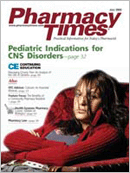Publication
Article
Pharmacy Times
Head Lice Treatments
Head lice are the most common form of lice, affecting 10 million to 12 million individuals in the United States annually. Head lice outbreaks are common in children who attend school and day care. Many of those affected are between the ages of 3 and 12 years.1 Girls are slightly more likely to be infested than boys.2 The peak times for outbreaks are usually after the opening of the school year, between August and November.1
Transmission
Lice can be spread easily from one individual to another through close bodily contact or through shared clothing or personal items (such as hats or hairbrushes). They cannot jump or fly. Head lice will not go away without proper treatment; in fact, the condition will continue to worsen.
Treatment
A variety of nonprescription pediculicide agents are available that can be used for the treatment of head lice (Table). These agents are available in the form of shampoos, lotions, rinses, and mousses. Patients should be advised to read all directions prior to using any of these products and to consult a health care professional if needed.
When used as directed, these OTC products can be very effective in treating head lice. If all nits are not gone after the first treatment, however, the product should be reapplied. The scalp and hair should be examined for at least 7 to 10 days. If head lice infestation persists after a second application, patients should contact their health care provider immediately for other treatment options.
Nonpharmacologic Removal Technique
To prevent the spread of head lice from one person to another, or to prevent reinfestation, effective treatment requires a multistep approach. It should include some of the following nonpharmacologic methods:
- Nit removal by the combing technique is an effective method for treating head lice; many products include a special nit-removal comb
- The immediate environment should be cleaned by vacuuming rugs, carpets, upholstered furniture, mattresses, and stuffed animals
- Linens should be washed in hot soapy water
- Personal items such as combs, brushes, and hats also should be cleaned
For a list of references, send a stamped, self-addressed envelope to: References Department, Attn. A. Stahl, Pharmacy Times, 241 Forsgate Drive, Jamesburg, NJ 08831; or send an e-mail request to: [email protected].







